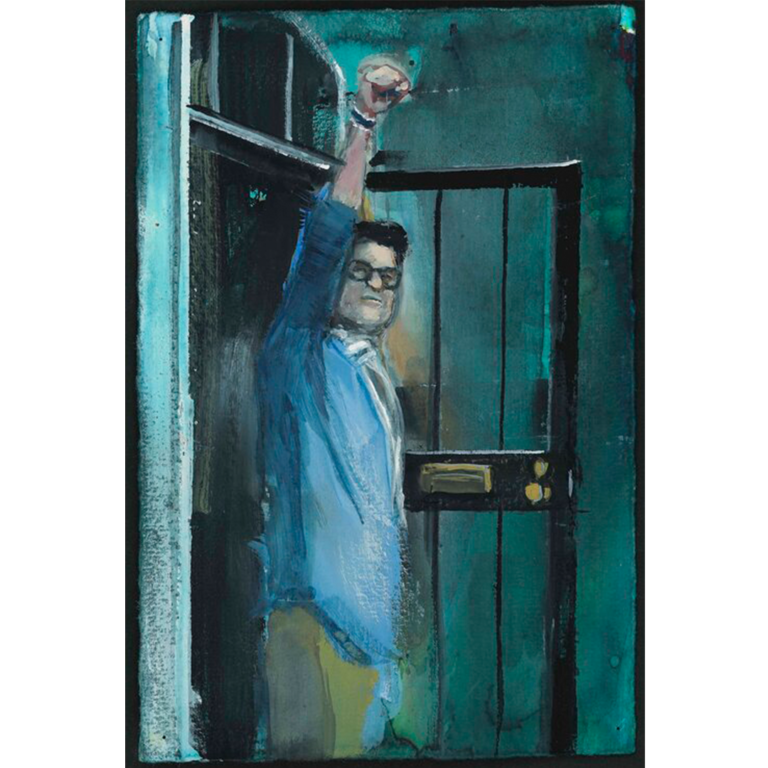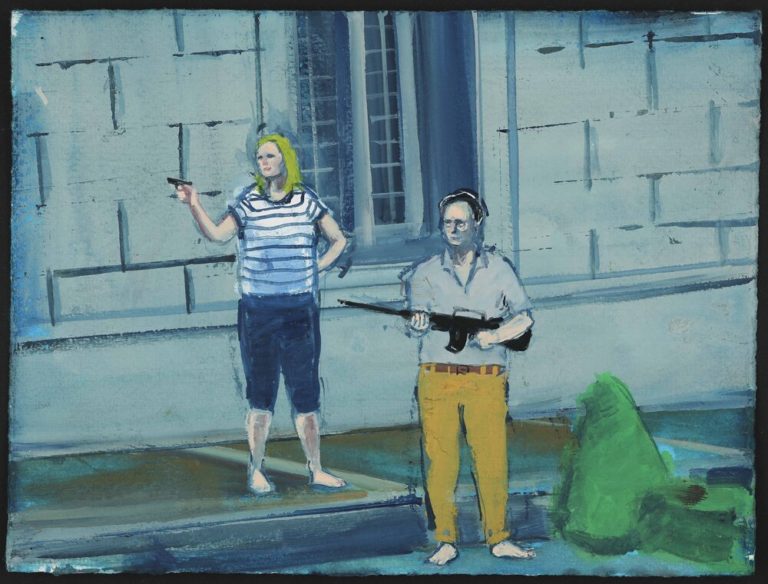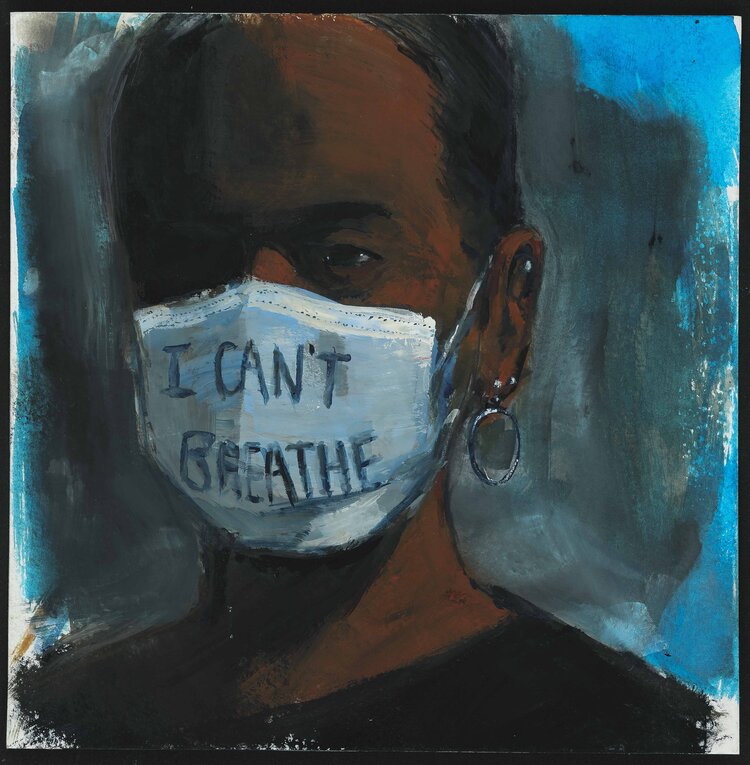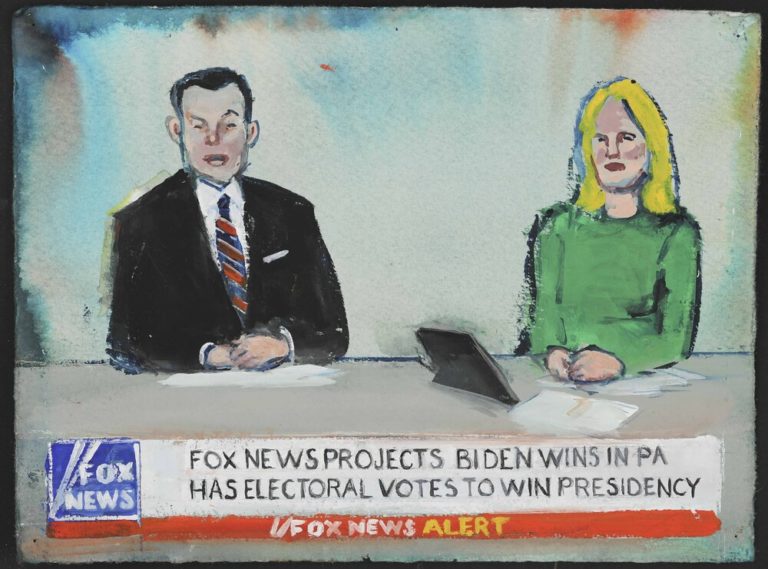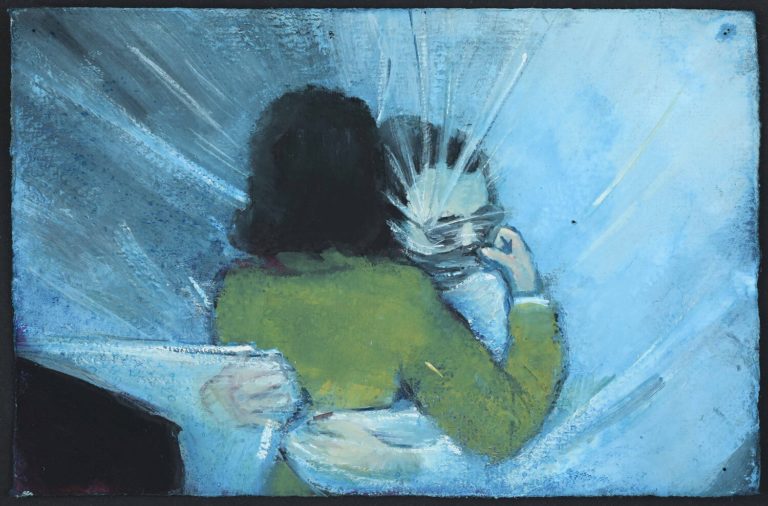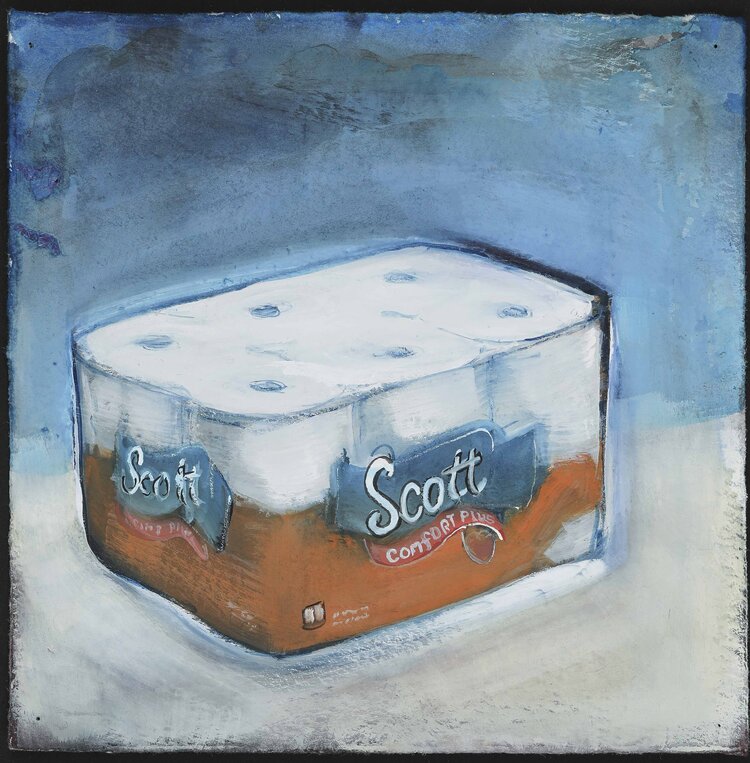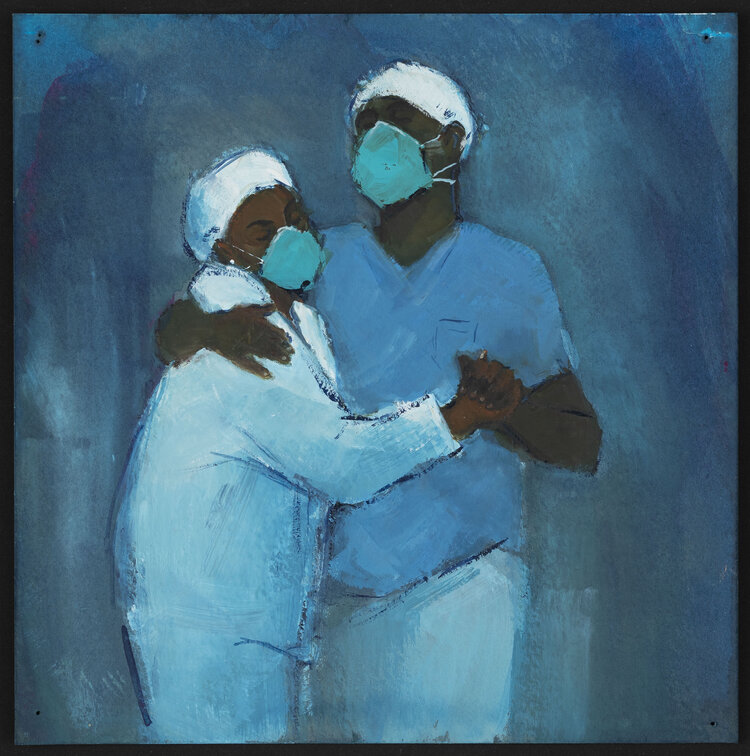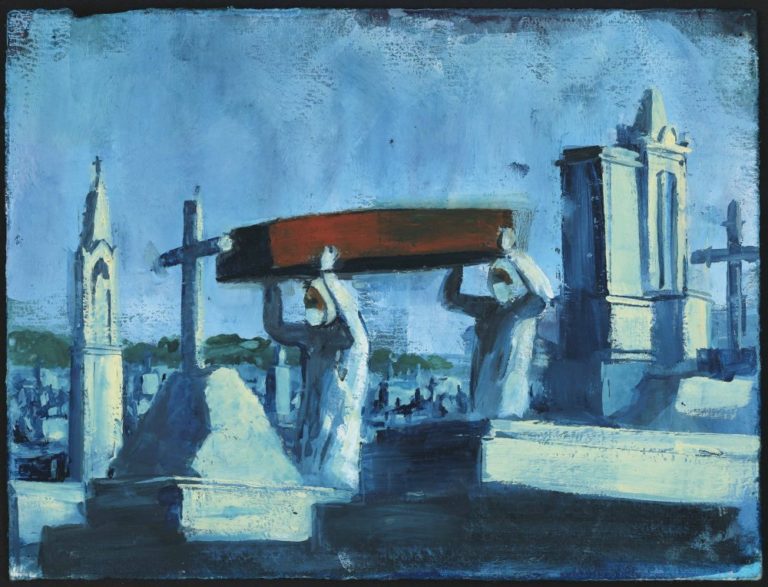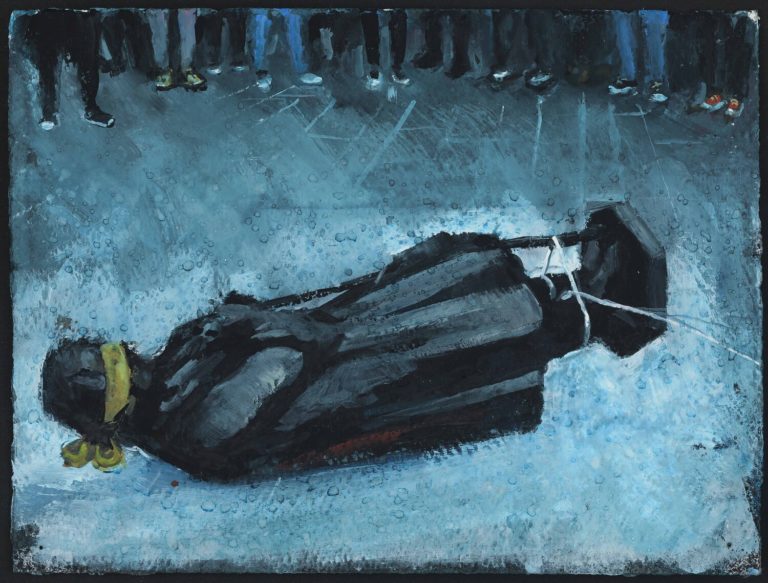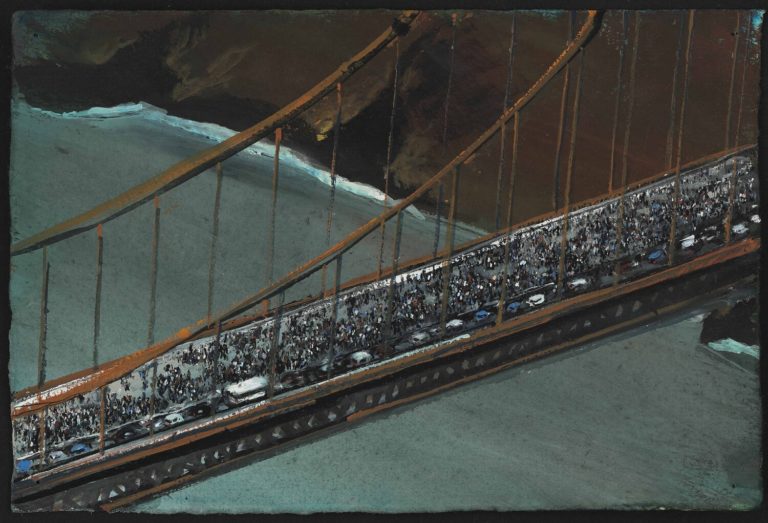It would be difficult to select one artwork to represent the last year’s heartbreaking and sometimes absurd tragedies, but those of us at SFMOMA needn’t look far to find a worthy installation of them.
Conservation technician James Gouldthorpe, a museum employee of 25 years, is the prolific artist behind COVID Artifacts, an ongoing project that distills our time’s calamities and controversies into postcard-sized paintings. Taken together, his profound vignettes depict the real-life heroes and villains, political upheavals, hospital scenes, and newly charged objects — from toilet paper to Goya beans — that became headline staples in a year of mostly bad news.
Gouldthorpe makes each COVID Artifact in his Richmond studio using a mixture of watercolor, gouache, and ink, sharing the finished pieces on Instagram in cadence with the furious news cycle that inspires them. An installation comprising more than 80 Artifacts is now on view in the exhibition Close to Home: Creativity in Crisis on Floor 3. He says it’s a surreal experience to have his artwork shown in the same galleries he has long prepared for others.
The artist began the work in March, following his family’s first pandemic trip to the grocery store. Unable to focus on ongoing projects, he spent an hour disinfecting purchases and considering this new world where packages of sustenance double as “vectors for potential death.” His subsequent painting of an overstuffed grocery bag, shared on March 30, 2020, marked the first installment.
“No one understood the potential lethality of the virus, my job was in jeopardy, and my recent college graduate son was struggling and full of despair,” Gouldthorpe recalls. “I wanted to paint the bag of groceries to represent that moment for us as a family and show how the pandemic caused everyday objects to be looked at with dread and fear.”
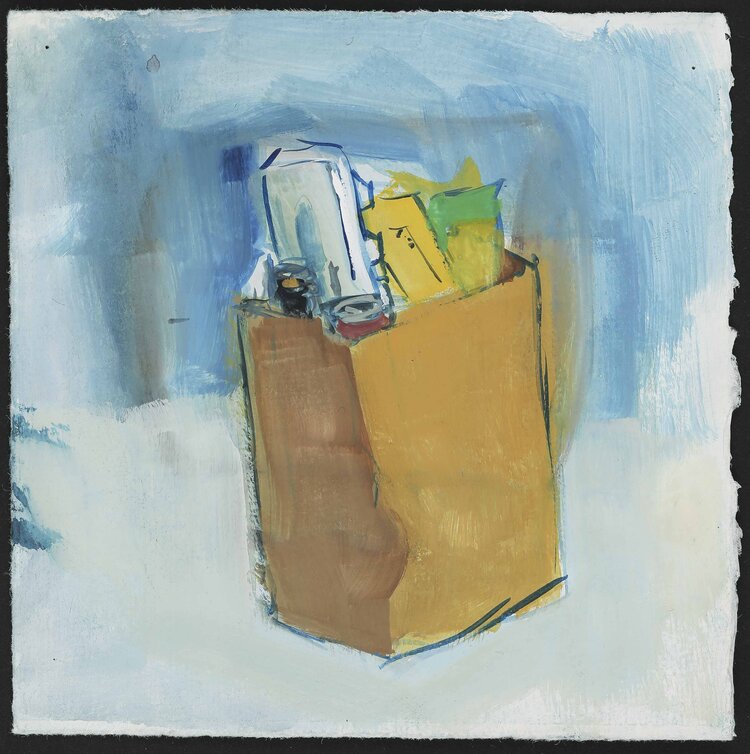
James Gouldthorpe, COVID Artifact 1; 2020; courtesy the artist; © James Gouldthorpe
Gouldthorpe has created hundreds of reactive Artifacts since then, turning his Instagram feed into a veritable graphic novel based on our converging crises. Scrolling through, the tiny frames restore memories that should be indelible but have nevertheless faded after a torrent of extraordinary moments. Curator of Photography Corey Keller, who selected Gouldthorpe’s works for Close to Home, compares the project to an “emotional time capsule” that highlights the complex relationship between images and memory. “For me, James’s intimate vignettes distill our collective experience into a series of poignant details,” Keller says. “As time has passed, the paintings have become increasingly freighted with meaning, even as we have begun to forget the particulars of the event depicted.”
Gouldthorpe’s broader practice, which incorporates video, painting, and photography, is inspired by the visual language of comics — an influence visible in this undertaking. He uses spray bottles of water and watercolor to liquefy and add texture to the images, working on multiple components at a time to stay responsive to current affairs. His water-based materials and penchant for spectral blue pigments make the Artifacts instantly recognizable when they appear in-feed. He frequently edits his work; many finished installments are reworkings of what he calls “failed” attempts.
“Seeing the layers of watermedia bleed into each other to create strange effects has been interesting,” he says of his unpredictable process. “It can be frustrating to watch a nearly complete painting suddenly become a pool of abstract color, but mostly it’s intriguing to see how the painting comes together in an unexpected way.”
He errs toward documenting events, not editorializing on them, though his subject matter offers wry commentary that becomes more potent when viewed in sequence. In May, for example, an intricate painting of a graveyard scene appeared between distillations of former President Donald Trump playing golf and a Louis Vuitton facemask. And while his Artifacts are sometimes humorous — Netflix’s Joe Exotic and a pair of amorous pandas each snagged a depiction — Gouldthorpe always yanks his viewers back to the year’s tragedies. These somber pieces, which include first responders at the pandemic’s frontlines, the summer’s protests against inequity and police violence, and landscapes scorched by wildfires, are the heart of the work. He finds it depressing but important to paint the images.
“I process the events by painting the problem as it builds up,” Gouldthorpe says. “I’ve painted a lot of bodies, a lot of mass graves…I don’t want there to be some sort of amnesia where we forget, and I do worry that might happen.”
The artist, who is a reluctant social media user, has been humbled to see his work connect with people across borders and demographics. A retired respiratory therapist thanked him for his depictions of healthcare workers. A student in Tasmania wrote to him asking for an interview for a class paper. Rahul Dubey, the Washington D.C. man who famously sheltered police brutality protesters in June, thanked him for creating a valiant depiction, and the two have since maintained friendly correspondence. Though skeptical of Instagram’s “like” and “share” vanity metrics, he describes the earnest comments as both moving and surprising. “It touched some people, and I wasn’t really expecting that,” Gouldthorpe says.
Much like the pandemic it chronicles, the project has no known end date. Gouldthorpe is committed to using his free time to paint, at least for now.
“What I am doing is in no way essential or important to the state of the world, and at times it can trigger deep depression,” the artist says. “But I am finding it necessary for my own state of mind to keep painting and build an archive of this time.”
…
